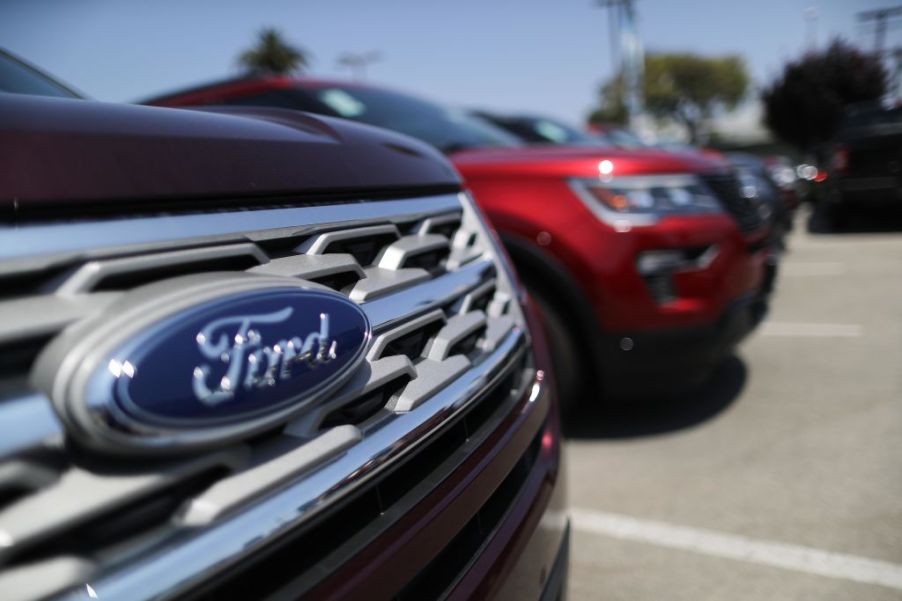
Ford and GM Waste a Lot of Money on Vehicles That Aren’t Trucks and SUVs
While you’d probably guess that some vehicles have better sales than others, you might be surprised that only a few vehicles bring in most of the profits for both General Motors and Ford. A study from Morgan Stanley Research highlights just this. It also underscores how popular trucks and SUVs are and how much money sedans lose the companies.
Only a few vehicles make most of the profits for Ford and GM
A study from Morgan Stanley Research, as reported by Trucks.com, found that General Motors Co. and Ford Motor Co. spend a lot of time and money manufacturing cars that don’t make money. Based on IHS Markit data, the study examined global light vehicle production by GM and Ford and estimated the revenue per unit for different models. Morgan Stanley’s cash flow forecasts then helped to estimate profits across the various models.
Findings showed that GM and Ford make a large portion of both revenue and profits from just a small percentage of their vehicles. The study also showed that most of the revenues and nearly all of the profits came from truck sales.
Both companies sell a large number of models that don’t sell enough units or don’t have high enough prices (or sometimes both problems) to make it worth continuing their funding.
Sales of GM vehicles
In 2019, GM sold 80 light vehicles around the world. The top revenue generators were the Chevrolet Silverado, Chevrolet Tahoe, Chevrolet Equinox, GMC Sierra, and Buick GL8. That’s two trucks, two SUVs, and a minivan that’s sold in China.
The study found that just these five vehicles provide 80% of GM’s earnings before interest and taxes (EBIT). There are 10 vehicles that produce 44% of GM’s revenue and nearly 100% of its automotive operating income. GM makes 70 other vehicles, which together add nothing to GM’s profits.
The study found that the five vehicles earning the highest revenue brought in about $5,300 per vehicle. For comparison, the lowest 60 vehicles lost about $1,100 per vehicle, and the lowest 30 lost about $3,600 per vehicle. General Motors had already discontinued several sedans in 2018, reflecting consumer preferences for trucks, SUVs, and crossovers.
Sales of Ford vehicles
There were similar findings for Ford, but it’s all about the truck for this company. In 2019, 47 Ford models were sold around the world. The five models with the highest revenues were the F-150 SuperCrew, F-250/350 Super Duty, Ranger, Transit, and Focus. Four of those are trucks, and the Focus is a compact car.
These five vehicles provide 43% of Ford’s revenue and 101% of the company’s automotive operating income. The study says that the Focus is not a profitable car, but the other four models make up 120% of Ford’s global profit. Profits from all the F-Series lines, Expedition, Transit, Ranger, and Explorer are estimated to generate 160% of Ford’s global profit. These percentages over 100% show that there are sizable losses in other models.
The 37 models at the bottom of the Ford list lose an average of almost $800 per vehicle, according to the study. Ford already announced in 2018 that most of its sedans would be discontinued, including the Focus and others.
According to Auto News, at the time, Ford’s CEO Jim Hackett announced, “We’re going to feed the healthy part of our business and deal decisively with the parts that destroy value.” The Mustang and Fusion are the only remaining cars available for 2020.
More trucks and SUVs in the future?
The Morgan Stanley study’s analysts wrote, “While disclosure from the companies on these metrics is minimal or nonexistent, we feel this is a highly useful exercise to help convey some important messages to investors and to the industry.”
The study did not account for the Coronavirus (COVID-19) pandemic, which may influence buyers to purchase more of the top-selling vehicles. Truck sales in May 2020 did better than the overall vehicle sales, and pickup truck sales make up a growing portion of the market share.
SUVs first had more sales than sedans in 2015. By 2019, SUVs comprised 47.4% of sales in the U.S., and sedans made up 22.1%. The whole light-truck segment, which includes SUVs as well as pickup trucks and vans, makes up 72% of sales, according to IHS Markit.
The study said that “Post-Covid restructuring provides a window of opportunity for (automakers) to cut waste and drive higher margins.” The current trends seem likely to increase in the foreseeable future, with continued growth for trucks and SUVs and an end for many sedans.


